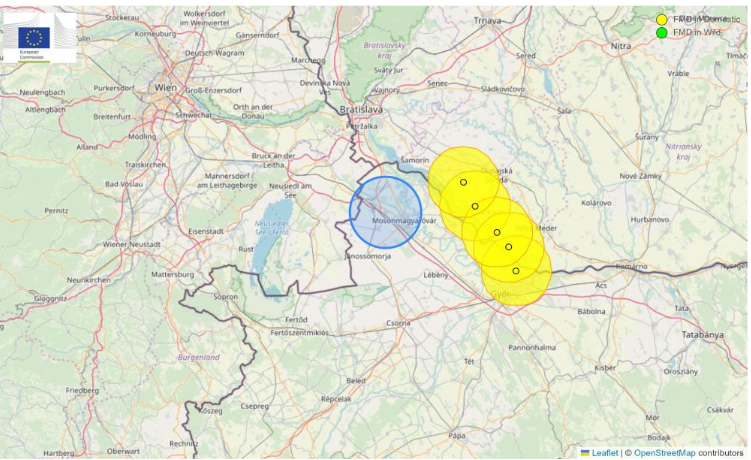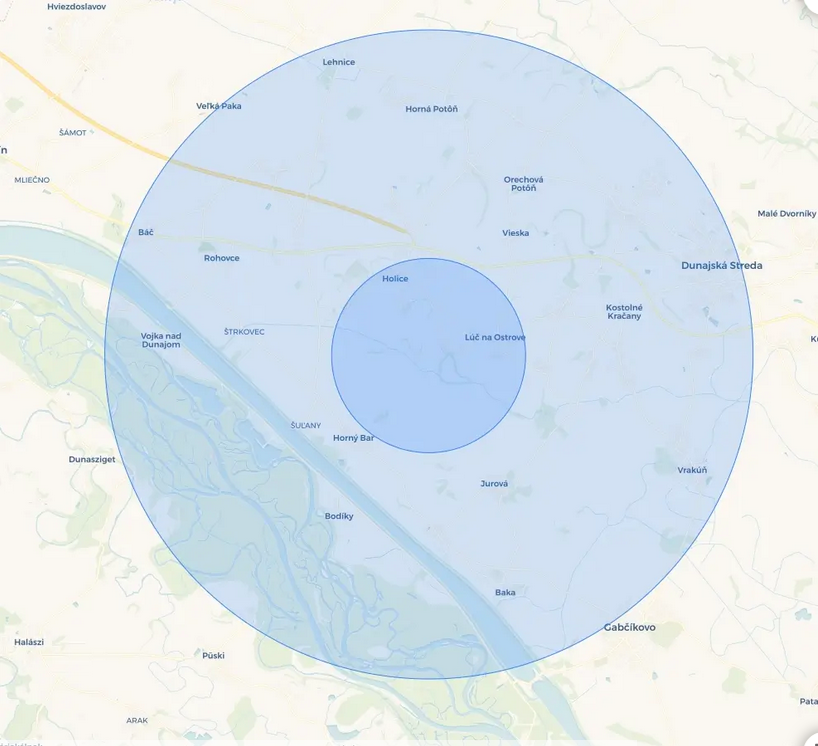Hungary reports a second outbreak of foot-and-mouth disease near Austria
The restriction zone established around this second outbreak, which involves more than 3,000 dairy cattle, covers a small part of Austrian territory.
Following the appearance of the first clinical signs on March 25, the laboratory of Hungary's National Food Chain Safety Office (Nébih) has confirmed the detection of a second outbreak of foot-and-mouth disease on a dairy cattle farm with a herd of 3,028 bovines, located in the municipality of Lével, in the district of Győr-Moson-Sopron, near the Austrian border. The 10-kilometre restriction zone established around this outbreak affects a small area of Austria.

In order to minimize the risk of virus spread, following confirmation of the outbreak, the country’s veterinary authorities immediately ordered emergency suppressive vaccination at the newly detected outbreak site, while the culling of the animals is also being carried out, with operations scheduled to begin today, March 28.
Additionally, a total movement restriction for susceptible species has been imposed in the districts of Győr and Mosonmagyaróvár for a period of 72 hours. The movement of animals to pasture has also been prohibited. Only transfers to slaughterhouses for immediate culling will be permitted, and only for animals originating from holdings located outside the restriction zone.
An epidemiological investigation is underway, particularly focusing on contact farms.
As of March 26, Hungarian authorities had tested 415 farms, all with negative results.
Interactive map of Hungarian counties showing the number of farms that tested negative for foot-and-mouth disease. Source: Nébih.
Canada strengthens support for ranchers and farmers following China tariffs
Canada is strengthening its AgriStability program in response to China's tariffs on Canadian agricultural and food products.
In response to China’s decision to impose 100% tariffs on Canadian exports of canola oil, canola meal, and peas, as well as 25% tariffs on certain pork, fish, and seafood products, Canada’s Minister of Agriculture and Agri-Food and Rural Economic Development, Kody Blois, announced enhancements to the AgriStability program to support producers facing these challenges. It is worth noting that in 2024, Canada exported pork products to China valued at $468.6 million CAD.
The changes include increasing the compensation rate from 80% to 90% and doubling the payment cap to $6 million CAD for the 2025 program year. Additionally, provinces and territories will be allowed to enter into agreements to issue higher interim payments and to activate Targeted Advance Payments in the event of tariffs, or specifically for the pork sector in the case of disease outbreaks such as African Swine Fever.
Producers enrolled in AgriStability may be eligible to receive up to 75% of their estimated final payment as an advance. The program also allows for the establishment of sector- or region-specific payments where market disruptions have resulted in sufficient losses to trigger AgriStability support.
The federal government reaffirmed its commitment to defending Canada’s agri-food sector both domestically and internationally and remains open to engaging in constructive dialogue with China to resolve trade differences on the basis of mutual respect.
https://www.canada.ca
Slovakia confirms a fourth outbreak of foot-and-mouth disease
The location of the new outbreak reinforces the possibility of long-distance airborne transmission, the most likely hypothesis.
The outbreak, confirmed by PCR conducted at the national reference laboratory for the disease, is located on a cattle farm with a census of 279 bovines, in the district of Dunajská Streda (Trnavský region), also bordering Hungary, within the restriction zone already established by outbreak 3. This has led to a slight modification of the zone by establishing the restriction area around the new outbreak, with a 3 km protection zone and a 10 km surveillance zone.

The location of the new outbreak shows an expansion of the disease following the course of the Danube River, which seems to reinforce the possibility of long-distance airborne dissemination, the most likely hypothesis based on investigations carried out by the Slovak authorities.






